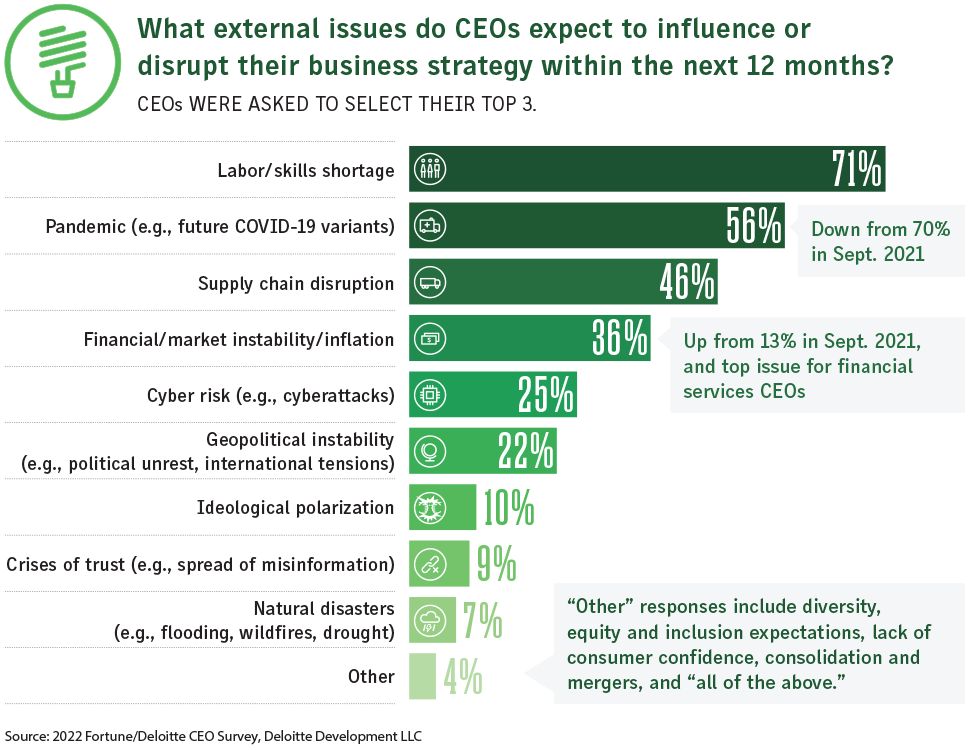Viewpoint: Talent crunch creates risk
Reprints
Among the many risks highlighted by top executives for 2022 is the ongoing shortage of talent. While this is by no means the first time the challenge of attracting and retaining skilled workers has been discussed by insurance executives, it appears that the issue has come into full focus with the unpredictable nature and duration of COVID-19.
In the 2022 Allianz Global Corporate & Specialty Risk Barometer, the shortage of skilled workforce placed ninth among top risks. This is the first time the issue has entered the top 10. Attracting and retaining workers has rarely been more challenging, according to CEOs, risk managers, brokers and other insurance experts. By industry, the talent shortage was ranked as a top five risk in the engineering, construction, real estate, public service and health care sectors, and as the top risk for transportation.
Similarly, in Deloitte’s first CEO survey of 2022, talent remains a top concern. When CEOs were first asked in June 2021 about the biggest challenge they faced, one quarter pointed to talent-related issues. Asked the same question in September, nearly half said talent, and that concern remains, with half of CEOs in January saying talent and workforce is their main challenge. Difficulties in fighting COVID-19 fatigue among employees, finding/keeping the best people and responding to new work paradigms were some of the issues that CEOs specifically called out.
Perhaps more pertinent for the risk management and insurance industry, 71% of CEOs selected labor/skills shortage as one of the top three external issues they expect to influence or disrupt their business strategy within the next 12 months. Take supply chain risk, for example, a longtime concern that has intensified during the pandemic. Labor shortages can have a major effect on supply chains, with a swathe of workers such as truck drivers, warehouse workers and local delivery drivers in short supply, and businesses, faced with higher operating costs, struggling to recruit and retain workers.
When asked what supply chain challenges their organization has experienced, more than three quarters of CEOs in the Deloitte survey said labor shortages, and more than half noted production and/or logistics delays.
CLICK IMAGE TO ENLARGE

As the world becomes more interconnected, supply chain vulnerabilities are emerging in many areas of business. Cybersecurity is a good example. The attack on the Colonial Pipeline in the U.S. last May underscored the need to strengthen and plan for future outages. The shutdown of the pipeline following a ransomware attack that forced the company to take some systems offline and halt the pipeline’s operations disrupted a major supply of fuel to the East Coast for about a week. Natural disasters, from hurricanes and tsunamis to floods and tornadoes, are also increasing and with rising climate risks inevitably global supply chains will be further disrupted.
It’s clear that with the labor shortages so many industries are experiencing, even with the best business continuity plans, organizations will struggle if they don’t have the right talent. For risk managers, business leaders will be leaning heavily on their expertise to address future volatility, disruption and uncertainty, and they are well-positioned, after two years of the pandemic, to contribute to their organizations’ success.